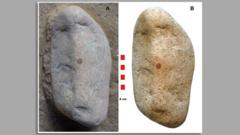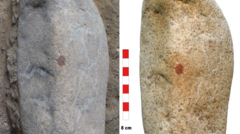A major breakthrough in identifying a deceased woman has occurred seven years after her death, linked to Interpol's international initiative aimed at restoring identities to unidentified victims.
Fingerprints Help Identify Paraguay Woman Seven Years Post-Mortem

Fingerprints Help Identify Paraguay Woman Seven Years Post-Mortem
Identification made possible through Interpol's Operation Identify Me campaign
In August 2018, the body of a woman was discovered in a poultry shed near a farmhouse in Girona, Spain. Nearly seven years later, she has been identified as Ainoha Izaga Ibieta Lima, a 33-year-old from Paraguay. This identification marks the second success of Operation Identify Me, a global campaign initiated by Interpol to resolve the identities of numerous unidentified women found deceased in Europe.
Interpol's Secretary General, Valdecy Urquiza, emphasized that each successful identification offers renewed hope to the families affected, stating, "Our work is not just about solving cases, it's also about restoring dignity to victims and giving a voice to those affected by tragedy." Lima was discovered without any identification, and locals near the farmhouse where she was found had no knowledge of her identity. A tattoo inscribed with the word "success" in Hebrew was the only clue.
In 2022, Lima's details were included in the operation, highlighting her case alongside others found deceased across Europe. This unique campaign has enabled Interpol to release black notices, which seek public assistance in identifying unknown bodies. Recently, a breakthrough occurred when Paraguayan authorities matched Lima’s fingerprints, which had been submitted to their national database following the black notice.
Lima's brother reported her missing in 2019 after she hadn't contacted the family since 2013, while she had traveled to Spain. Despite her identification, the conditions surrounding Lima's death remain mysterious.
Rita Roberts, a 31-year-old woman from Wales, was the first to be identified through the campaign after her family recognized her distinctive black rose tattoo in a media report. Now, the operation continues its crucial work, pursuing the identities of approximately 45 other unidentified women believed to be victims of homicide and aged between 15 and 30.
The rise in global migration and human trafficking complicates the efforts to identify missing persons, according to Interpol. As such, details of ongoing cases, including photographs and possible identifying items, are published on Interpol's website, inviting public participation to help unravel other cold cases.
Interpol's Secretary General, Valdecy Urquiza, emphasized that each successful identification offers renewed hope to the families affected, stating, "Our work is not just about solving cases, it's also about restoring dignity to victims and giving a voice to those affected by tragedy." Lima was discovered without any identification, and locals near the farmhouse where she was found had no knowledge of her identity. A tattoo inscribed with the word "success" in Hebrew was the only clue.
In 2022, Lima's details were included in the operation, highlighting her case alongside others found deceased across Europe. This unique campaign has enabled Interpol to release black notices, which seek public assistance in identifying unknown bodies. Recently, a breakthrough occurred when Paraguayan authorities matched Lima’s fingerprints, which had been submitted to their national database following the black notice.
Lima's brother reported her missing in 2019 after she hadn't contacted the family since 2013, while she had traveled to Spain. Despite her identification, the conditions surrounding Lima's death remain mysterious.
Rita Roberts, a 31-year-old woman from Wales, was the first to be identified through the campaign after her family recognized her distinctive black rose tattoo in a media report. Now, the operation continues its crucial work, pursuing the identities of approximately 45 other unidentified women believed to be victims of homicide and aged between 15 and 30.
The rise in global migration and human trafficking complicates the efforts to identify missing persons, according to Interpol. As such, details of ongoing cases, including photographs and possible identifying items, are published on Interpol's website, inviting public participation to help unravel other cold cases.




















